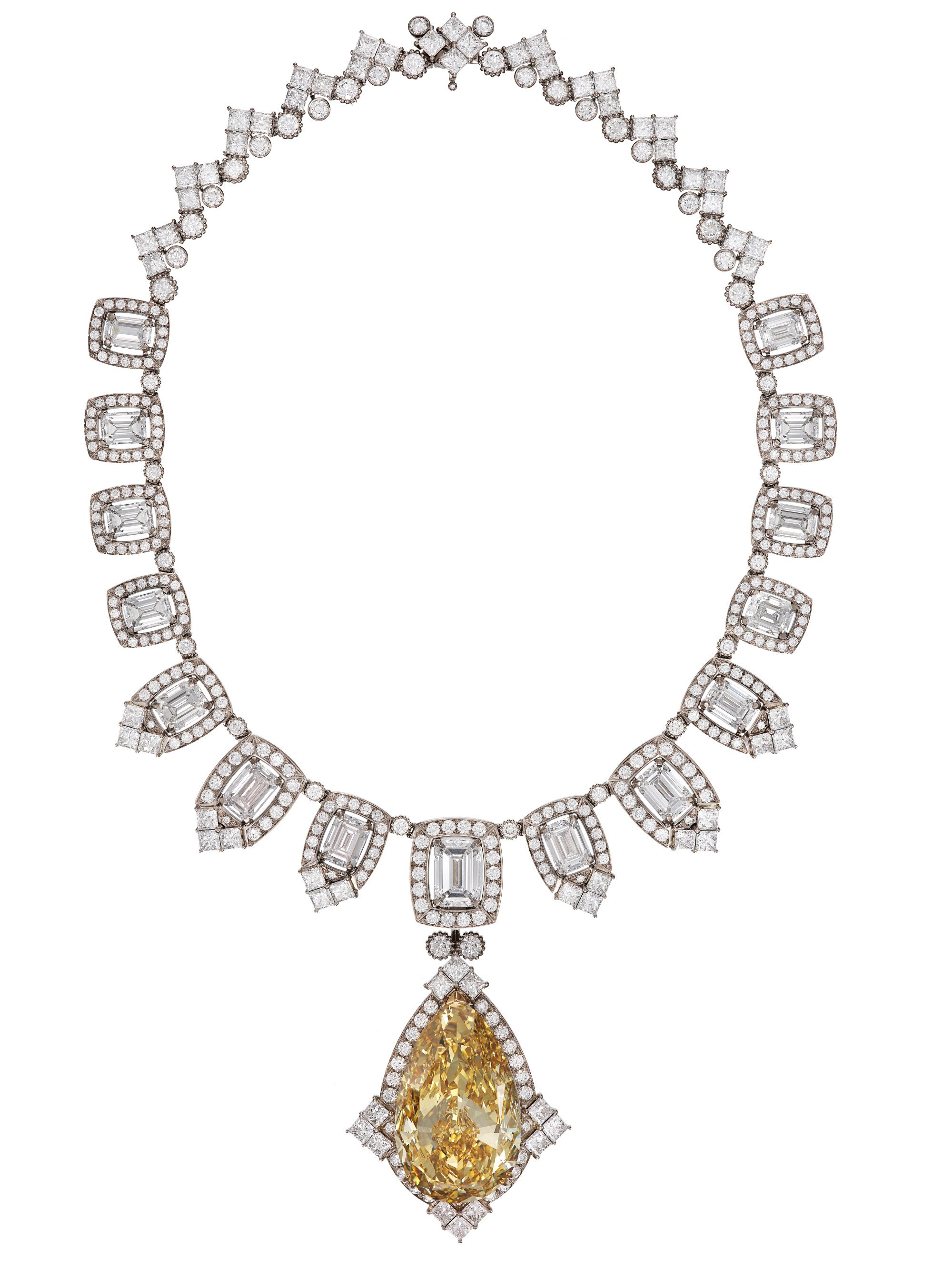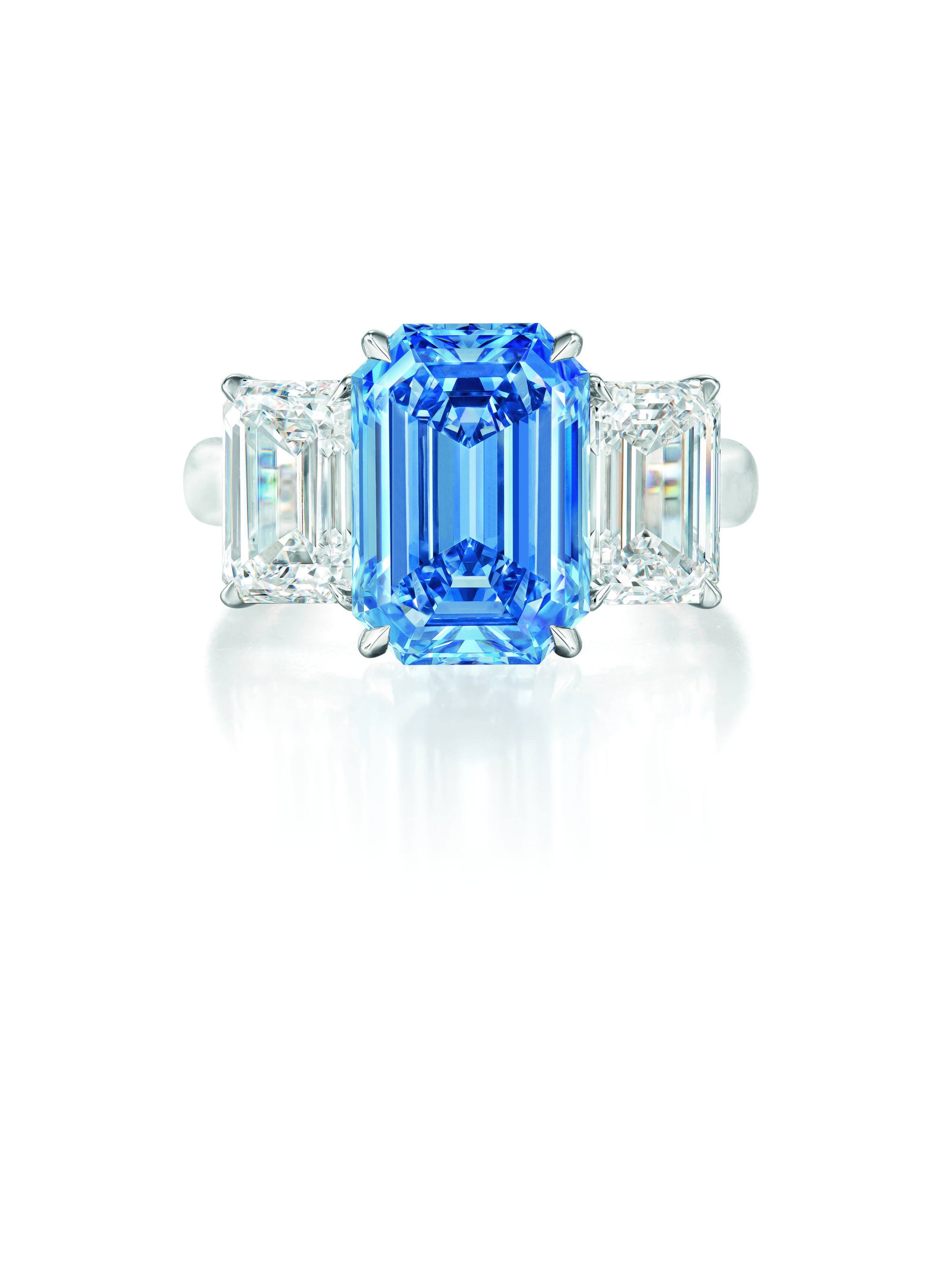A good time to invest in pink, blue or yellow diamonds? Fancy coloured stones will never go out of style, with distinctive shapes capturing increased interest – especially among Chinese collectors


Divas to disco: how retro culture is driving today’s high jewellery designs
De Beers’ Metamorphosis collection is notable for several exceptional diamonds aside from the orange, including a 10.28-carat fancy vivid orange-yellow diamond and an extremely rare fancy intense pinkish-purple diamond ring. “We’re seeing increased interest in coloured diamonds – especially in distinctive shapes,” says Céline Assimon, CEO of De Beers Jewellers, who mentions one client who requested very specific proportions for her pear-shaped earrings, which De Beers was able to accommodate.

“High jewellery is still an investment category, like couture or art. There is value in the design and craftsmanship but also in the materials used, which should be the finest – the best of the best. It’s a constant in how this category has grown over time, catering to a discerning clientele,” she adds.
All high jewellery can be considered a form of investment, with prices for these one-of-a-kind designs starting at around US$200,000. When you take into consideration a highly sought-after, rare, vividly coloured diamond, then “investment” takes on a whole new meaning. This is where the smart money is – even banks invest in these geological rarities.

The steep rise in the value of pink diamonds seen in the last decade is partly attributable to Chinese buyers entering the market. “The year 2010 marked a landmark in this segment,” says Miri Chen, CEO of FCRF.
“Since then, prices have steadily increased year after year due to unprecedented demand for fancy coloured diamonds from the Chinese market. It’s believed that a third of fancy coloured diamond buyers worldwide are Chinese.”
Outside the box: colourful gems to wear in an alternative engagement ring
The company’s collections feature a couple of beautiful fancy vivid blue diamond rings and an impressive 10.24-carat fancy intense purple-pink diamond ring.

Among other fancy coloured diamonds, Abram highlights how yellow diamonds have maintained their popularity in Hong Kong for more than 40 years. The jeweller has established such a strong market for yellow diamonds that they are now the brand’s bestselling stones after white diamonds.
However, Abram has noticed a rise in interest over the past couple of years due to their increasing value: “Collectors in our region tend to make acquisitions as prices increase, resulting in a commensurate growth in appetite for these diamonds,” he says.
Chen observes that fancy yellow diamonds have been a good investment because there are more buyers who can afford them compared to pink or blue diamonds. “The fact that most high-end brands are building jewellery collections with fancy yellow diamonds helps maintain their price stability,” she adds.

Naturally, fancy coloured diamonds are coveted not solely for their scarcity but also for their quality, size and beauty. The more intense the colour, the greater the value.
A flawless 15.10-carat De Beers fancy vivid blue diamond sold at Sotheby’s Hong Kong last year for US$57.82 million, while the 10.57-carat Eternal Pink, the most vivid pink diamond ever to come to auction, sold at Sotheby’s New York in June for US$34.80 million. These stones are of course of supreme quality as well as size, and therefore beyond rare. They also offer a valuable indication of public sentiment, which jewellers look to – although private transactions play an important role in valuing a stone.
Is modular jewellery the future of fashion? 2023’s best detachable pieces
Pascal Mouawad, co-guardian with his brothers of the Mouawad diamond dynasty, shares Abram’s view on yellow diamonds. “Fancy vivid yellow diamonds are becoming rarer and so are really holding their value,” he says, noting that Mouawad’s Hong Kong clients are always looking for masterpieces: flawless, classical in style and set in smaller pieces, such as rings or earrings – unlike their Middle Eastern clientele, who tend to buy large necklace sets. “[East] Asians appreciate quality rather than size,” the jeweller observes.
Mouawad’s father – a royal jeweller and watchmaker to the Saudi Arabian royal family during the oil boom of the 1970s and 80s – was a famous collector of significant and exceptional diamonds, giving the family a deep insight into the stones’ investment potential and collectability. Interestingly, Mouawad has noticed that the market for blue and pink diamonds has gone a bit soft – “but this means it’s a good time to invest as the market will come back”, he says.

Compared to the steep rises in value seen in the first half of last decade, prices of fancy coloured diamonds have slowed. But as Harsh Maheshwari, executive director of Kunming Diamonds, a leading trading house in polished natural-coloured diamonds based in Hong Kong, points out: “The market for colour is maturing but not peaking yet.” He therefore remains bullish about the situation.
All choked up: how neck jewellery evolved, from ancient Egypt to Kendall Jenner
Kunming Diamonds has a particular affection for pink diamonds, which mostly come from Africa and Brazil, but especially the small yet highly collectable and exceedingly pretty pink, purple and red diamonds from the Argyle mine of Western Australia, which closed in late 2020.
Kunming secured much of the last tender from the mine, but there is huge excitement as Rio Tinto (owner of the mine, which produces Argyle Pink Diamonds) announced in October a special new Beyond Rare tender to the diamond industry. These diamonds are the most intensely coloured, but they are also very small – less than half a carat in size – and will eventually filter into prestigious jewellery collections.

While Chinese clients are generally not shy about looking for investment possibilities in these rarities of nature, the big jewellery houses would be reluctant to admit that some jewellery in which they have invested a great deal of creativity and craftsmanship might be bought simply for investment, to be resold at a later date.
However, in these uncertain times, even the super-wealthy are making decisions with one eye on the future.

- Haute Couture Week saw yellow diamonds at Graff, Messika, De Beers, Chaumet and Dolce & Gabbana, after South African soprano Pretty Yende sang at Charles III’s coronation bedecked in sunny-hued stones
- The market for pink and blue diamonds looks soft compared with a decade ago, while Argyle Pink Diamonds owner Rio Tinto sparked excitement this month with the announcement of a new Beyond Rare tender